Are you a Quiet Speculation member?
If not, now is a perfect time to join up! Our powerful tools, breaking-news analysis, and exclusive Discord channel will make sure you stay up to date and ahead of the curve.
With SCG Dallas in the books, the process of deciphering the metagame can commence. True, there have been plenty of MTGO results to pore over, but selected lists don't form a random sample. It's curated with a goal in mind, and so not every deck has an equal chance of being included. In large tournaments, any deck can win, ensuring statistical randomness. The Worcester Classic was a decent start, and great for some, but a Classic doesn't provide the same value as an actual Open.
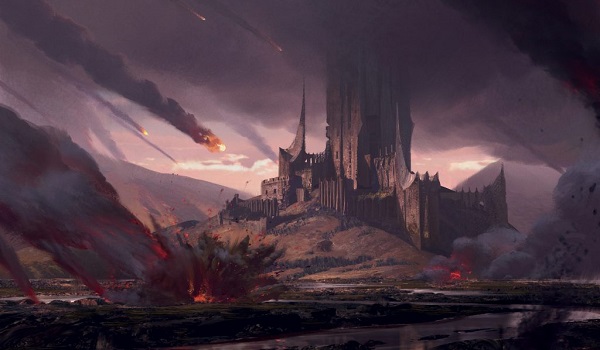
All that said, the results of Dallas don't inherently indicate the actual metagame. Rather, they provide the first major data point. The next few weeks promise a slew of high-level Modern events, and it will be the similarities and differences between those that actually define the metagame.
Today's article focuses on the rough metagame picture we can gather now. The coming weeks of tournaments will display how everyone reacts to this information. Once this process repeats itself a few times, the actual metagame will come into focus.
The Day 2 Metagame
GR Ponza won SCG Dallas. I am shocked. Andrew Wolbers must really know his deck, because I'd never expect Ponza to beat Storm. Yes, there's Trinisphere in his sideboard, but with only two Lightning Bolts, you'd think the Storm player would have an insurmountable advantage. Storm only needs two lands to go off, is also a Blood Moon deck, and usually destroys ramp strategies. Just goes to show that matchup percentage isn't everything and any deck can win any tournament (within reason, Mono-Green Stompy players).
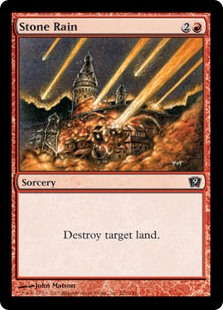 Ponza's win doesn't necessarily mean anything analytically. To wrap our heads around the metagame, we need to look at the larger picture. It starts with the broadest picture available, which is the Day 2 Metagame. Take a look at it here.
Ponza's win doesn't necessarily mean anything analytically. To wrap our heads around the metagame, we need to look at the larger picture. It starts with the broadest picture available, which is the Day 2 Metagame. Take a look at it here.
My first thought is surprise at Storm's prevalence. We haven't heard much out of this deck lately, and its metagame share has been steadily decreasing. To see it come back in force is interesting. Part of it is certainly that one of the pilots is Caleb Scherer, and he's exclusively played Storm for years as far as I know, but that doesn't explain the rest of them. I know from experience that Storm is quite vulnerable to disruption, and with interactive decks supposedly on the rise post-unbannings, it's not a deck I expected to see to this degree.
Indeed, Jund and Burn are the next most-represented decks, both of which are favored against Storm—Jund has plentiful disruption and a clock, while Burn has Lightning Bolt and Eidolon of the Great Revel. Not to mention Jeskai Control, another heavily interactive deck, ties for third. There must be more to the Storm resurgence.
The Top 32
Let's move to the next level of data. Star City released the Top 32 lists instead of the usual 16, presumably because it's a "new" format, and the results are surprising, as they don't fall totally in line with metagame trends.
| Deck | Total # |
|---|---|
| Gifts Storm | 5 |
| Eldrazi Tron | 3 |
| Counters Company | 3 |
| GR Ponza | 2 |
| Jund | 2 |
| Jeskai Control | 2 |
| Infect | 1 |
| BR Hollow One | 1 |
| Bogles | 1 |
| Colorless Eldrazi | 1 |
| UB Faeries | 1 |
| UW Control | 1 |
| GB Tron | 1 |
| Four-Color Pyromancer | 1 |
| Sultai Tezzeret | 1 |
| Tribal Zoo | 1 |
| Burn | 1 |
| Blue Moon | 1 |
| Humans | 1 |
| GB Company | 1 |
| UG Eldrazi | 1 |
Notably, the only UW Control deck to Day 2 also made Top 8. What is especially interesting to me is that the list is slower than mine, and my own deck's slowness proved problematic in testing. Perhaps I should just embrace the mighty glacier just like Gerrick Alford clearly has. I did wonder if my problems were unique, and this result suggests that it really is just my own problem.
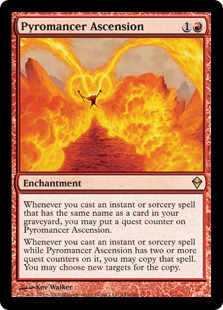 The big winner is Storm, again. Five of its seven Day 2 decks made Top 32, with two copies in the Top 8—an impressive conversion rate. Storm's success makes it all the more incredible that Ponza was able to win the trophy. This is in sharp comparison to both Burn and Jund, who saw significant drop-offs. Also, Eldrazi Tron did very well, converting three of four decks and one Top 8. Here is another deck that seems to wax and wane in popularity. It's never awful, but it also never gets any press or real results for months and then reappears.
The big winner is Storm, again. Five of its seven Day 2 decks made Top 32, with two copies in the Top 8—an impressive conversion rate. Storm's success makes it all the more incredible that Ponza was able to win the trophy. This is in sharp comparison to both Burn and Jund, who saw significant drop-offs. Also, Eldrazi Tron did very well, converting three of four decks and one Top 8. Here is another deck that seems to wax and wane in popularity. It's never awful, but it also never gets any press or real results for months and then reappears.
This Top 32 has a very wide spread of decks, which would indicate that diversity remains high. Storm is far ahead of everyone else, but after that it's relatively close. Were I to combine similar decks like the Tron variants, it would be a much shorter list. This gives me hope that the unbannings have been positive.
The Classic Results
Along with the main event, we have a Classic to investigate. It does not have the population of the Open, and so is of lesser value. Look at this as a spread of what is possible and potentially what wasn't quite enough for the Open's metagame.
| Deck | Total # |
|---|---|
| Humans | 3 |
| Jund | 2 |
| Burn | 1 |
| Gifts Storm | 1 |
| UR Prison | 1 |
| Mono-Green Tron | 1 |
| Dredge | 1 |
| Jeskai Control | 1 |
| Titan Shift | 1 |
| Esper Taxes | 1 |
| Infect | 1 |
| BR Hollow One | 1 |
| Grixis Death's Shadow | 1 |
Once again, a dark horse took the race. Dredge won the Classic, and I would never have expceted that considering how little presence the deck has had since Golgari Grave-Troll was rebanned. Unlike with the Ponza vs. Storm upset, the fact that Dredge beat Jund in the final is not surprising. That said, it apparently had to get through a lot of ramp and combo decks—bad matchups—to make it that far.
Meaning
The fact that Ponza and Dredge won is very interesting, not only because they're already off-the-radar decks, but also because they fit into a recent pattern. This pattern has me wondering about the actual health of Modern.
The Linearity Cycle
Last week, Bogles won the MTGO Championship and everyone went rather hyperbolic. Before that, BR Hollow One did well at the Pro Tour, and suddenly everyone's lining up to play blackjack. Dredge gets press every time it reappears. I wouldn't be surprised if by the time this article is published, plenty of writers will have already begun singing the praises of GR Ponza and Storm (the former for winning the tournament, and the latter for its excellent conversion rate).
This pattern seems to repeat itself for whatever uninteractive deck outperforms expectations on a given next week. It is a bit cynical, though not wholly inaccurate, to chalk this up to jumping at the shiny thing. Talking about the thing that everybody is talking about is great for site traffic. However, if you look beyond the writers themselves, there is something going on. These weird and largely uninteractive decks pop up, then fade. This is no accident.
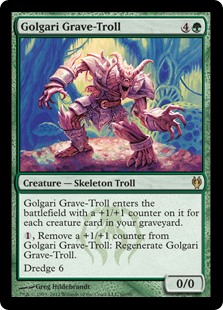 I have previously written about the Dredge Cycle, where Dredge would lie low and wait for everyone to forget to bring graveyard hate before winning everything one week before disappearing again. I've realized that this does not just apply to Dredge, but to a whole swath of decks. These decks are weak, either in a vacuum or to certain hate, but when nobody is looking, they will absolutely crush a tournament. Dredge is the poster child, but this also applies to Bogles, Lantern Control, Storm, etc. They're all linear decks that are absolutely killer when they're unexpected, but that fall apart with a target over their heads. I believe this is what we are looking at right now in Modern. Weird and unusual linear decks are winning and then fading while sideboards shift to answer them. The hate goes in, and a new and unaffected deck wins. I'm going to start calling this the Linearity Cycle until I come up with a better name.
I have previously written about the Dredge Cycle, where Dredge would lie low and wait for everyone to forget to bring graveyard hate before winning everything one week before disappearing again. I've realized that this does not just apply to Dredge, but to a whole swath of decks. These decks are weak, either in a vacuum or to certain hate, but when nobody is looking, they will absolutely crush a tournament. Dredge is the poster child, but this also applies to Bogles, Lantern Control, Storm, etc. They're all linear decks that are absolutely killer when they're unexpected, but that fall apart with a target over their heads. I believe this is what we are looking at right now in Modern. Weird and unusual linear decks are winning and then fading while sideboards shift to answer them. The hate goes in, and a new and unaffected deck wins. I'm going to start calling this the Linearity Cycle until I come up with a better name.
Implications
Players are always looking to break the format. We're mostly spikes; we want to win. The best way to do that is play something powerful and left-field that nobody knows how to play against. Ergo, regardless of what deck is the actual best, players will be showing up trying to beat that deck. And it will work enough of the time to be worthwhile. Therefore, we should expect some distortion of our data sets while fringe decks have space to roam.
The metagame is still fluctuating and appears to be very open. However, I don't believe that it will stay that way. The success of the aforementioned decks suggests to be me that Modern is starting to narrow. In very wide metagames, targeted or fine-tuned decks tend to suffer from not hitting their targets. As a result, they disappear from view. When the metagame becomes more defined, they return. So to me, the recent success of these unique decks signals a loss of format diversity.
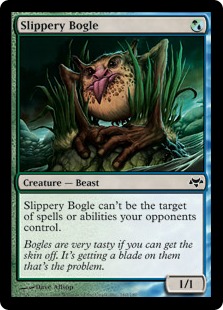 The common thread between these decks is that they crush midrange value decks. BR Hollow One explodes early with robust creatures. Bogles are hexproof. Ponza is functionally a ramp deck, though an odd one. Jordan's Eldrazi deck hits hard early and can't really be exhausted. All of these decks are designed to beat control and midrange decks, which were the decks that Jace, the Mind Sculptor and Bloodbraid Elf boosted.
The common thread between these decks is that they crush midrange value decks. BR Hollow One explodes early with robust creatures. Bogles are hexproof. Ponza is functionally a ramp deck, though an odd one. Jordan's Eldrazi deck hits hard early and can't really be exhausted. All of these decks are designed to beat control and midrange decks, which were the decks that Jace, the Mind Sculptor and Bloodbraid Elf boosted.
If the metagame was slowing down, then we'd expect these predatory decks to resurface and thrive. Considering that Bogles is now maindecking Leyline of Sanctity, which was previously just an anti-Jund card, it certainly looks like everyone expects midrange to dominate. Storm has been quiet for a while, yet showed up in force in Worcester. Also, go back to Jordan's tournament report. He primarily ran into slower decks; I counted just pure aggro decks in Humans, Affinity, and Burn. Consider, finally, that six Jund decks made Day 2 of the Open, but only two made Top 32.
Is diversity decreasing, or are Jund and UWx Control actually pushing out other decks? I don't know, and even if I thought I knew, it is far too early to be certain. What I do know is that it will be harder to be certain than expected. If midrange decks actually are the best decks and are actually pushing out other decks, we may miss it, because the anti-midrange decks are doing the actual winning. This would create what I consider a false diversity, reminiscent of Standard Affinity at its height. I don't consider a deck, or strategy, and a bunch of decks that just prey on it a "healthy" metagame. As the metagame develops, we may not know if things are truly fine, or if we're blind to a major problem.
Looking Ahead
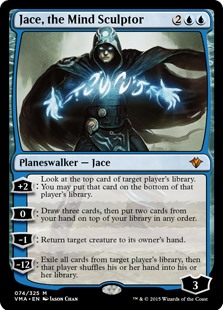 As more data comes in, the metagame will take a more concrete shape. Truth cannot hide forever. Whether we will have an accurate reading is an open question. I want to believe that we will, and that the data will reveal a perfectly healthy metagame. So far, it looks like unbanning Jace and Bloodbraid Elf was harmless. However, I'm concerned that there is a problem brewing that we just can't see yet. The first thing to observe is whether this trend of offbeat linear decks winning events continues through GP Phoenix this weekend. I'll be watching.
As more data comes in, the metagame will take a more concrete shape. Truth cannot hide forever. Whether we will have an accurate reading is an open question. I want to believe that we will, and that the data will reveal a perfectly healthy metagame. So far, it looks like unbanning Jace and Bloodbraid Elf was harmless. However, I'm concerned that there is a problem brewing that we just can't see yet. The first thing to observe is whether this trend of offbeat linear decks winning events continues through GP Phoenix this weekend. I'll be watching.




I agree with your observation it certainly is a good possibility. I experience your cyclical theory when ever I play Living End. When Dredge is hot I leave LE at home. Every couple months or so I take a break from Burn and play LE when everyone leaves their Relics and RIPs at home and usually 4-0 FNM uncontested because of no sideboard hate. As for Jund hating out most every deck and rogue decks crushing tournaments because they find the soft spot in the meta I can totally see that being the case. On the surface people see Ponza, Humans, Bogles, etc. winning first and think “SEE! a tier 2 deck won 1st, we have a diverse meta…” Eh, not really it is secretly a sickly side effect of a narrow meta. When we start seeing Jund having a 3 way tie for 2nd 3rd and 4th place then I will be certain of it.